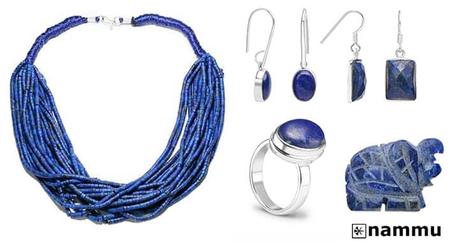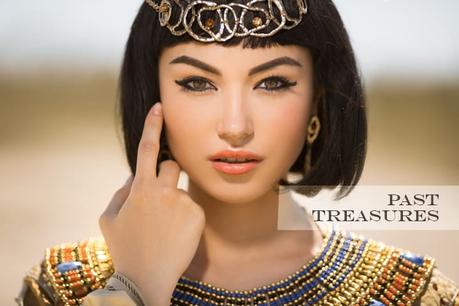
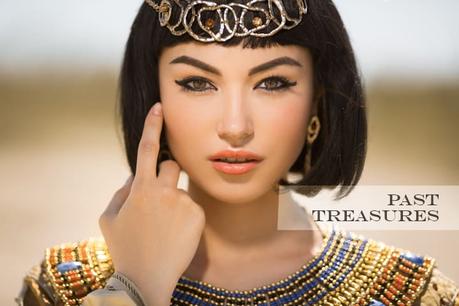
Dear, readers! We continue with our trip around the world to learn about the history of the pieces of jewelry that have marked the history of humanity. Today I will talk about the magnificent jewelry of Egypt.
In the ancient Egyptians, as in the ancient civilizations, personal adornment was highly valued, and jewelry was worn by both men and women of all social classes. Earrings, bracelets, armbands, collar pieces, rings and anklets were all common types of adornments worn in ancient Egypt.
Empowered by advanced technology, access to the precious metals and gems, and culture of nobles and royalty who appreciated luxury and rarity over mass produced jewelry items, they soon become the leading force of jewelry manufacture and creators of trends that will live forever.
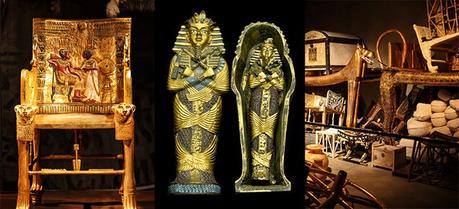
However, jewelry played different roles in the Egyptian community. They had a religious and magical meaning and were used to protect the bearer from evil. Although the jewels were to be used in life, they were also used to decorate the mummies as funerary rituals.
Archaeological studies have shown that the tombs were adorned with crowns, necklaces, gold ribbons, bands, belts like waist belts, earrings, bracelets, rings, bracelets and pectorals that were worn around the chest.
Materials
The ancient Egyptians began making jewelry with fairly simple materials such as branches of plants, shells, pearls, stones or solid bones, and these were organized into linen or cowhide threads during El-Badari and Naqada, which are very ancient cultures that existed in the Predynastic Period of Egypt.
The function of the jewels for the Egyptians, furthermore of being a resource of beauty, was also a symbol of power and a sign of protection, the Egyptians wore a variety of jewels in life and after death, when they were to be mummified , the jewels were also used for a different ceremonies and rituals.
The Egyptians began to use glass substances to give the stones a little shine, and they also gained experience in making jewelry with different metals, such as gold, silver and copper, and with semi-precious stones.

Copper was one of the first metals used, initially it was used in its natural state, modeled with the use of a hammer, then, they discovered the casting technique and they start to make different alloys with different materials such as arsenic or tin.
Gold was related to the Sun, at the same time was related to the God Ra, who represents the god of heaven, the cycle of death and resurrection and the origin of life in Egyptian mythology, silver was related to the moon or to the Egyptian god Iah, whose meaning is the same, its used was slight compared to gold or copper, silver jewelry was very rarely discovered during Egyptian excavations, being that silver It was not exactly available in ancient Egypt.
The lower class people could afford copper, while the nobility preferred gold, although the desire of every teenager at this time was to have some jewel of gold to be able to show off. Both materials were mined in the Nubian deserts and the supply was abundant.Egyptian jewelers used gold whose color variations ranged from gray to brick red and pink. The variation in colors came from the intentional and natural mixture of elements such as silver, copper and iron with gold.
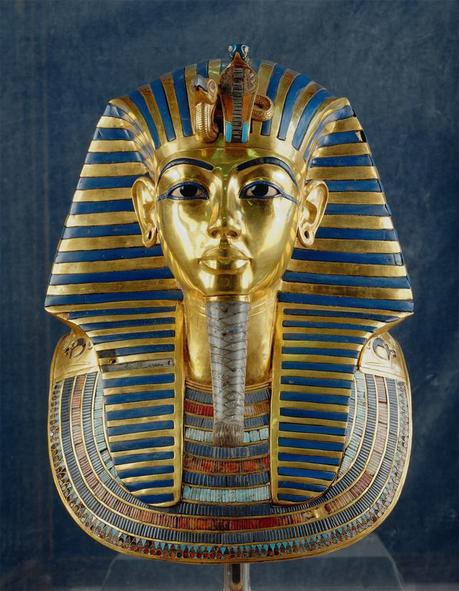
Gold Mask and Beard of Tutankhamun Inlaid with Polychrome Glass and Semi-Precious Stones New Kingdom, Dynasty 18, Tutankhamun Nebkheperure, ca. 1336-1327 BC Gold, Lapis Lazuli, Calcite/Eg. Alabaster/Travertine, Obsidian, Glass, Faience, Feldspar
Top Colors
Egypt was noted for the use of a variety of colors ranging from warm colors, starting with yellow represented by gold, followed by orange, brown and red, to colds color as green and blue, all these colors was a meaning: red, represented energy and life force, to wore those colors they use of Carnelian, red jasper, garnet, all these minerals whose main characteristic is their diversity of red tones, the egypts also used green tones, for them this color represented: life, fertility and regeneration, represented by these minerals: turquoise, green jasper, malachite, feldspar, another predominant color in their vestiment was blue, and the meaning was divinity, eternity, they wore it with the use of faience and lapislazuli, this mineral its way through the Mediterranean towards ancient Egypt, where it was the favorite stone for amulets and ornaments such as beetles; it was also named by the Egyptians “the stone of the stars”, because of its heavenly appearance.
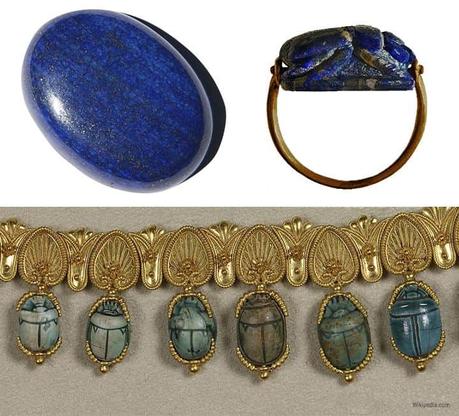
Lapis lazuli jewelry has been found in Naquada excavations. In Karnak, the relief carvings of Thutmose III, show fragments and cylindrical pieces of lapis lazuli, being given to him as a tribute. Lapis lazuli powder was used as makeup by Cleopatra.
Symbols
The ankh is one of the most familiar of Egyptian symbols. The ankh may represent the life-giving elements of air and water. It was often shown being offered to the king’s lips as a symbol of the “breath of life”. The popularity of the ankh is evident in the numerous and varied types of everyday objects which were shaped in the form of the ankh. In Tutankhamun’s tomb, a gilded mirror case was found in the shape of the ankh.
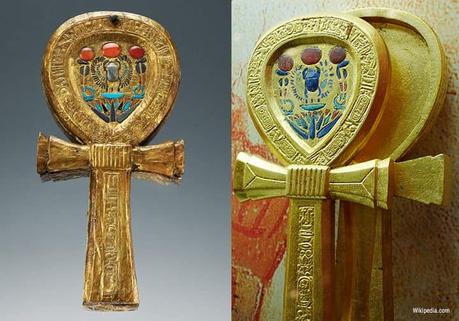
Another important symbol of ancient Egypt is The eye of Horus, as it is a symbol of protection, royal power and good health. The eye is personified in the goddess Wadjet. Horus was an ancient a sky god whose eyes were said to be the sun and the moon. However, he soon became strongly associated with the sun (and the sun god Ra as Ra-Horakhty (“Ra, who is Horus of the two horizons”) while Thoth was associated with the moon.
An ancient myth describes a battle between Horus and Set in which Horus´ right eye was torn out and Set lost his testicles!Thoth magically restored Horus´ eye, at which point it was given the name “Wadjet” (“whole” or “healthy”).
In this myth it is specifically stated that it is Horus’ left eye which has been torn out, so the myth relates to the waxing and waning of the moon during which the moon appears to have been torn out of the sky before being restored once every lunar month.

It was believed that the Eye of Horus has a healing and protective power, and it was used as a protective amulet. It was also used as a notation of measurement, particularly for measuring the ingredients in medicines and pigments. The symbol was divided into six parts, representing the shattering of Horus´ eye into six pieces. Each piece was associated with one of the six senses and a specific fraction.
Jewels

Tutankhamun bracelet:
It is a jewel with incrustations of carnelian agate, lapis lazuli and colored glass. It has a hinge and a clip that serve as a closure and has an edge that surrounds the lapis lazuli beetle. The beetle in ancient Egypt represented the rising sun, the resurrection and was an amulet of life and power. It is said that in life it provided protection against evil.
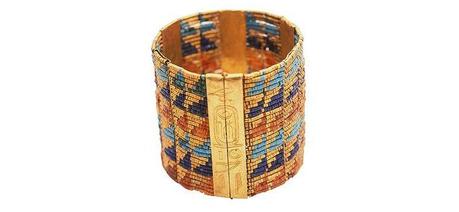 Queen Ahhotep Bracelet:
Queen Ahhotep Bracelet:

This bracelet is composed of thirty rows of gold pearls and semiprecious stones, alternating with one another in a pattern that forms triangles and squares. The gold plates that are observed slide one inside the other to close the bracelet.
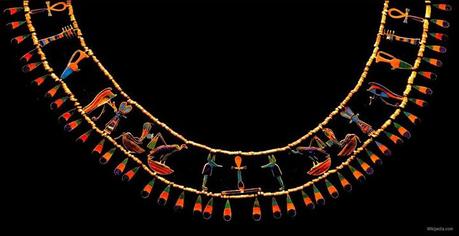
Necklace of Princess Khenmet or Khnumit:
A jewel belonging to the “The King’s daughter” as they call her in royal titles, is presumed to be the daughter of the pharaoh Amenemhat II of the twelfth dynasty of the Middle Kingdom of Egypt, this pharaoh governed during the 18th century BC. The princess, was buried in the pyramidal complex of Amenemhat II, it is believed that she must been the daughter of this pharaoh since his sarcophagus, mummified body and the funeral equipment was found intact near the pyramid of his alleged father in Dahshur in 1894.
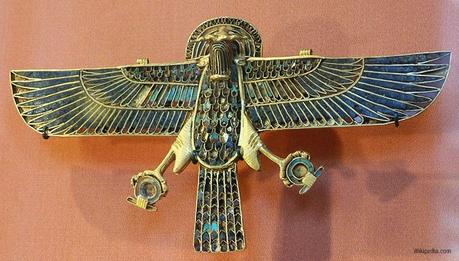
Falcon’s amulet with ram’s head:
It was found in the mommy of a sacred bull or Apis, a solar god of fertility and funerary. It is made of gold, lapis lazuli, turquoise and carnelian, belongs to Ancient Egypt, year 1254 BC, (Kingdom of Ramses II). It is currently in the Louvre Museum.
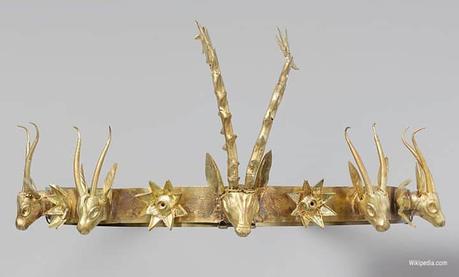
Headband of an unknown Egyptian queen or princess:
This unique piece, its made of electrum (gold-silver alloy and traces of copper and other metals) with rope ties at the back and mounted with rosettes and animal heads, its seems to have been made in Egypt under Asian inspiration and if it is not, is an Asian import. In the 18th century, it was popular to decorate princess headbands with the forms of a gazelle head instead of the vulture associated with the main queens. This crown may have been part of the outfit of some foreign princess, sent as a bride to one of the pharaohs.

Tutankhamun brooch:
6.8cm high brooch made of gold, silver and colored crystals. It reflects two royal cobras, a half moon in gold and a full moon in silver to protect the king day and night.
If you want to get jewelry with history, I invite you to access here and you can continue discovering pieces made in Lapis Lazuli and other incredible materials with very interesting stories.
